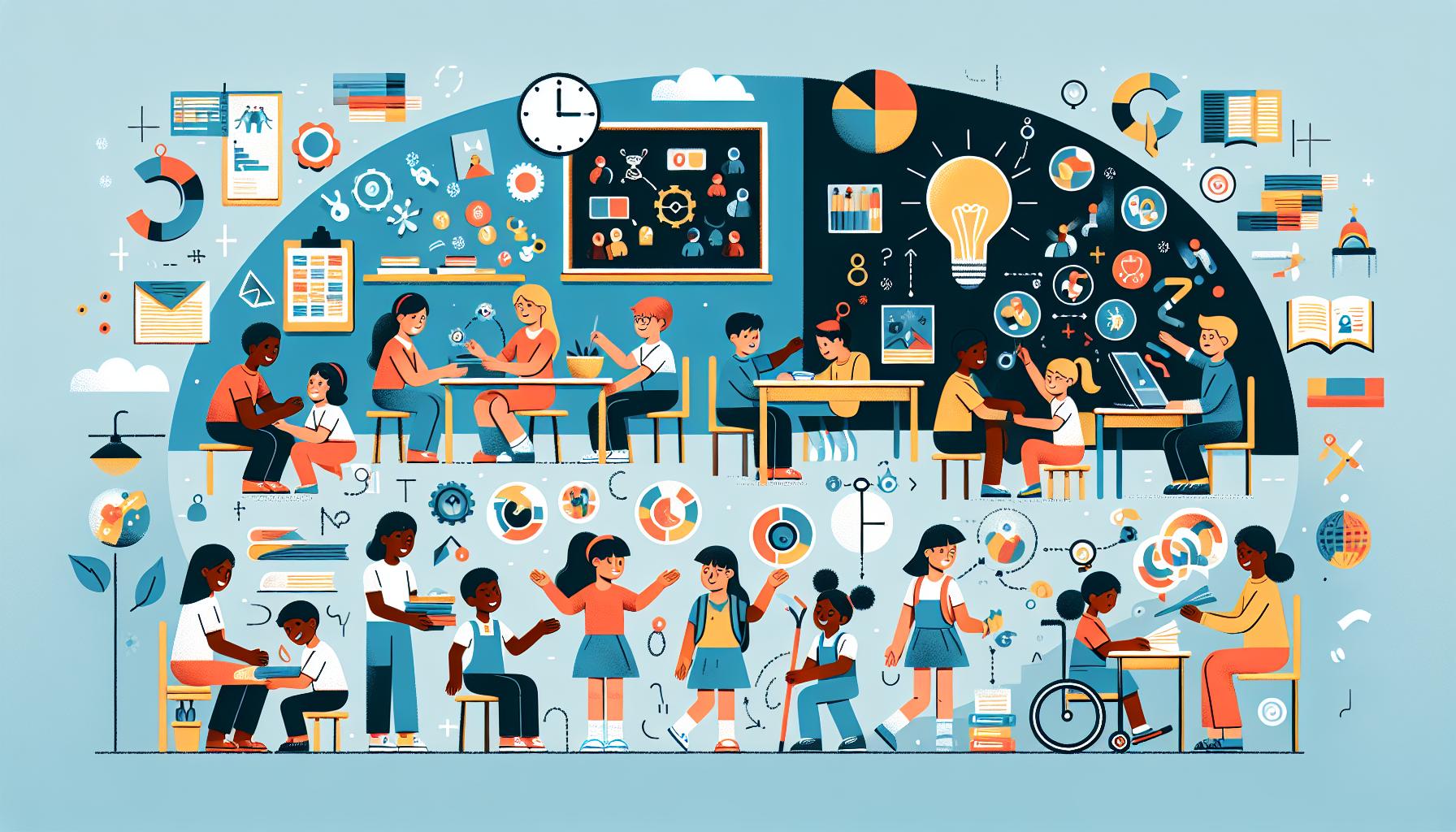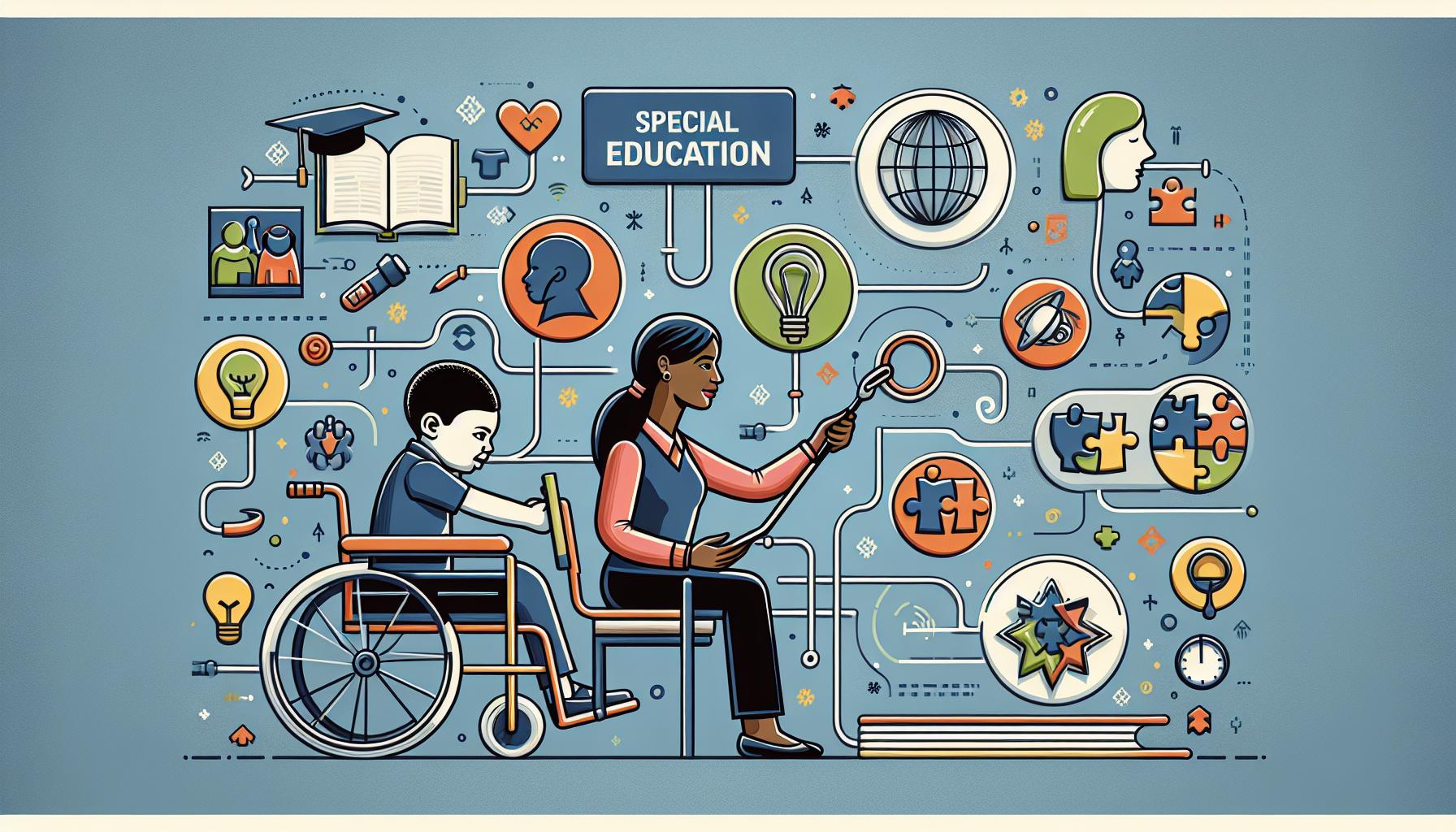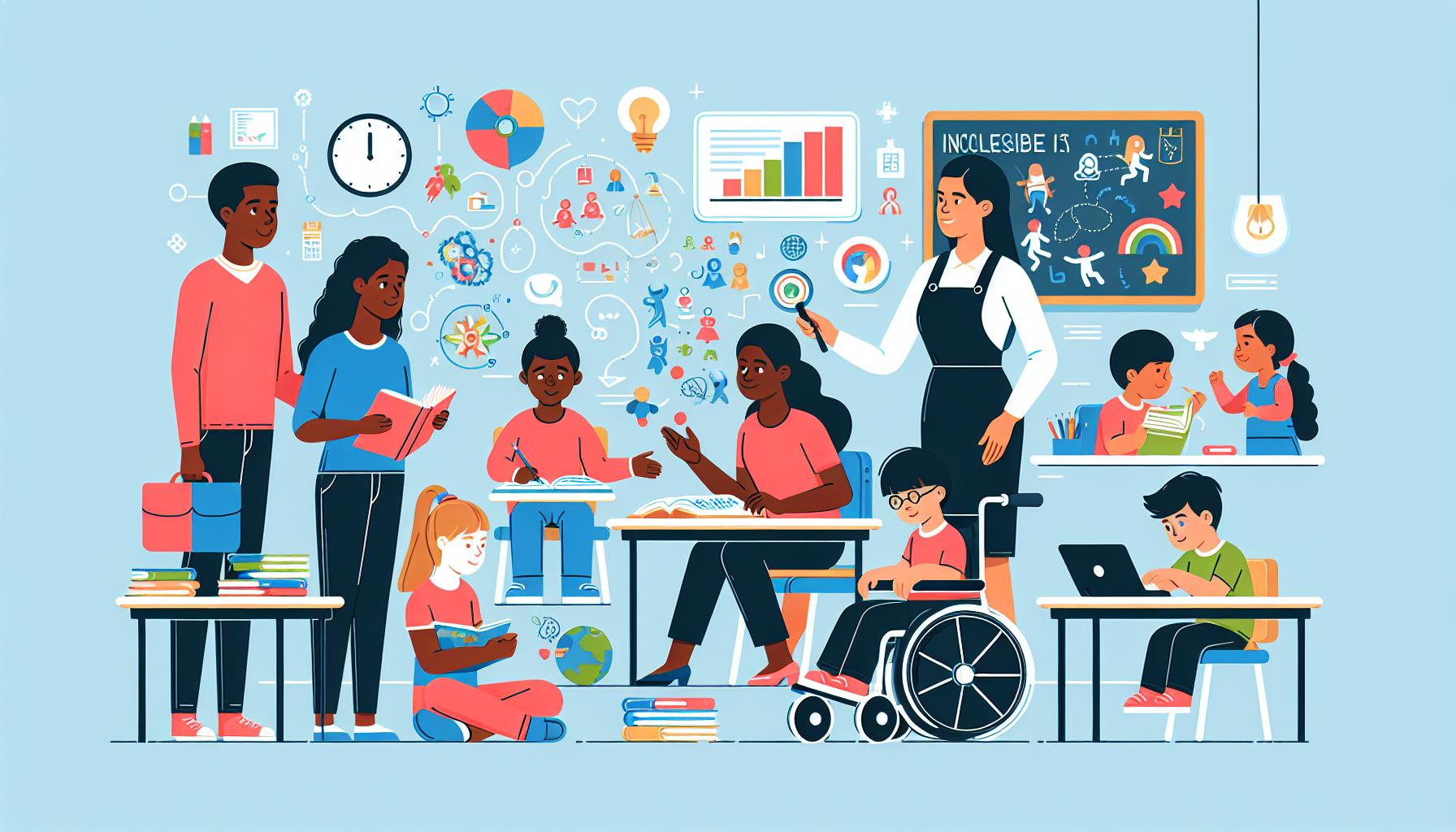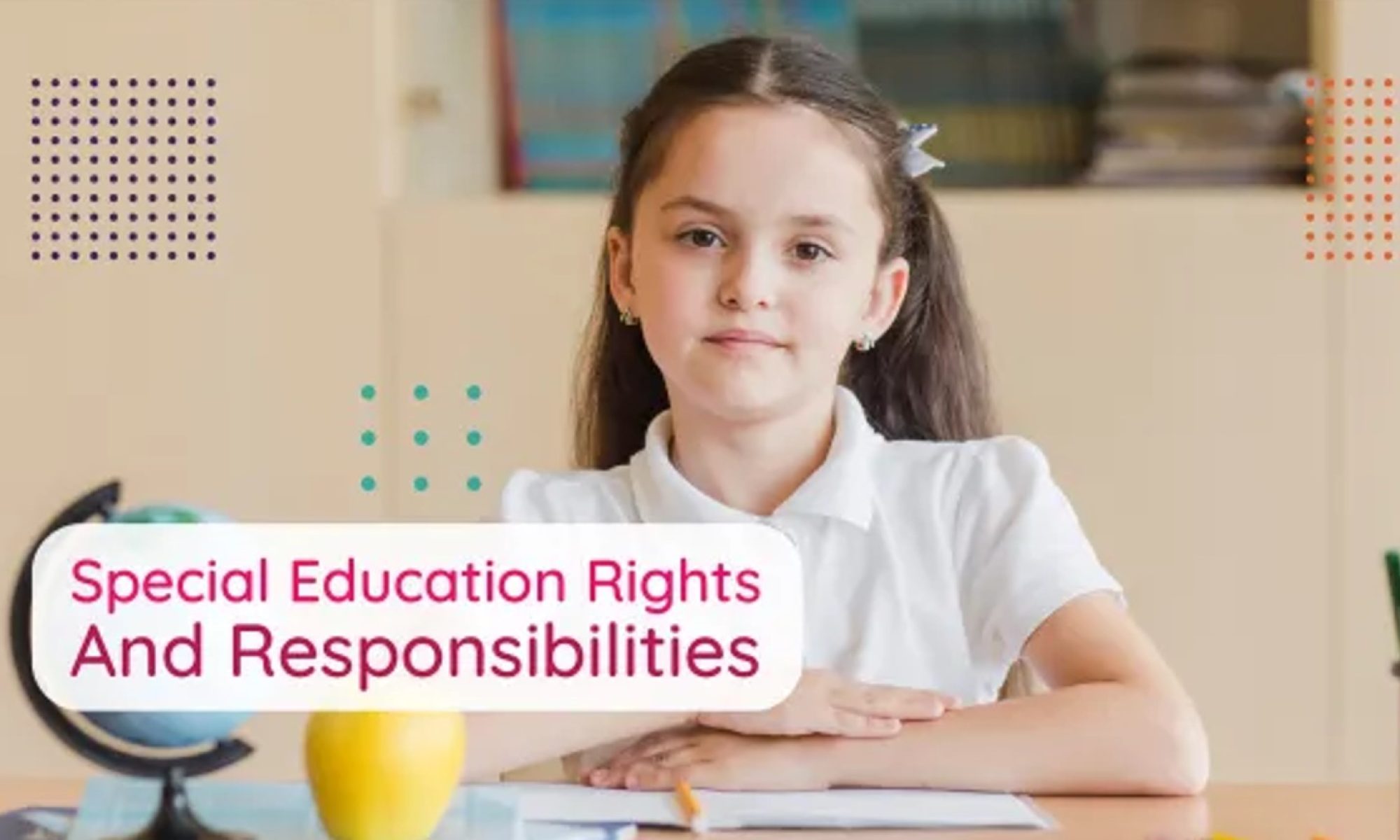Wondering what qualifies a child for special education? You’re not alone. It’s a question many parents ask when they notice their child struggling acadically, socially, or emotionally. In the U.S, the Individuals with Disabilities Education Act (IDEA) provides a clear framework for this.
Under IDEA, a child must have a documented disability that affects their educational performance. This could be anything from a learning disability, emotional disturbance, to a physical impairment. But it’s not just about having a disability.
The child’s disability must also necessitate special education services. That means traditional education methods aren’t sufficient for the child to learn effectively. So, how do you know if your child fits these criteria? Let’s dive deeper into what qualifies a child for special education.
Key Takeaways
- The Individuals with Disabilities Education Act (IDEA) is the core legislation that outlines specifications for children to qualify for special education in the U.S.
- IDEA states a child must have a documented disability that hampers their traditional learning process thus necessitating special education services.
- IDEA classifies disabilities into 13 categories – Autism, Deaf-blindness, Deafness, Emotional disturbance, Hearing impairment, Intellectual disability, Multiple disabilities, Orthopedic impairment, Other health impairment, Specific learning disability, Speech or language impairment, Traumatic brain injury, and Visual impairment including blindness.
- The child’s documented disability must directly affect their educational performance to qualify for special education, which is determined through comprehensive evaluations.
- The necessity of special education services is ascertained by studying the impact of the classified disabilities on the child’s learning capabilities and whether the child requires specialized learning methods.
- Parents play a crucial role in identifying potential disabilities, understanding eligibility under IDEA, and advocating for their child to get an appropriate Individualized Education Program (IEP).
Understanding the Individuals with Disabilities Education Act (IDEA)

Let’s delve deep into the heart of the matter – The Individuals with Disabilities Education Act (IDEA). This critical federal law in the U.S. is your go-to resource when addressing your child’s special education needs. It not only ensures children with disabilities have access to public education just like their peers, but also focusses on special education and related services tailored to meet their unique needs.
IDEA is categorized into four different parts, each encompassing a unique aspect of special education services:
- Part A: Outlines the general provisions of the law
- Part B: Details assistance for education of all children with disabilities
- Part C: Deals with infants and toddlers with disabilities including children aged from birth to three
- Part D: Describes the national support programs administered at the federal level
Most noteworthy is Part B of IDEA, related to the education of school-aged and preschool children.
Thus, the Act simplifies the identification process of children in need of special education. It also ensures they receive adequate services to draw the highest academic achievements possible.
Inherent in IDEA is the principle of Free Appropriate Public Education (FAPE), guaranteeing that schools provide special education and related services at zero cost to parents. What’s more, these services should be designed to meet the unique needs of the child and should conform to the Individualized Education Program (IEP), documented for each child.
Your understanding of IDEA will empower you to advocate for your child’s educational rights. Remember, knowledge is the key to unlock potential and break down barriers. Bear in mind, IDEA was created with your child’s best interest at heart, working in parallel with your efforts to help your child thrive in an educational setting. Continue to learn and utilize your resources for a successful academic journey.
Documented Disability and Educational Performance

The Interplay Between Disability and Education
To understand a child’s eligibility for special education, it’s pivotal that you delve into the relationship between a documented disability and educational performance. IDEA points out 13 specific categories of disability under which children may be eligible for services. These include Autism, Deaf-blindness, Deafness, Emotional disturbance, Hearing impairment, Intellectual disability, Multiple disabilities, Orthopedic impairment, Other health impairment, Specific learning disability, Speech or language impairment, Traumatic brain injury, and Visual impairment including blindness.
Remember, a child must not just have a disability, but that disability must also affect their educational performance. Therefore, a child with a disability might not qualify for special education if their disability does not impair their educational performance.
The Role of Evaluations
When determining eligibility, a comprehensive evaluation becomes indispensable. This comprehensive evaluation considers all the areas related to the suspected disability. It also takes into account how a child’s disability affects their involvement in the general education curriculum. This isn’t a one-time thing – it’s an ongoing process, meant to ensure that any variations in your child’s needs are accurately reflected and responded to.
Emphasis on Individualized Assessment
The chisel that carves out the eligibility path for special education is a process of individualized assessment. Every child, regardless of their type of disability, receives an individualized evaluation and determination. This ensures that the specific nature, strengths, and areas needing support in their learning profile are taken into account when identifying their need for special education and designing an appropriate Individualized Education Program (IEP).
So, when you anticipate the journey for qualifying for special education services for your child, keep in mind the interplay between a documented disability and its impact on educational performance. Make it your goal to understand the child’s disability thoroughly, appreciate the importance of a comprehensive evaluation, and above all, value the unique identity and individual needs of your child. As you navigate this process, remember that IDEA is your guide, aimed at helping your child reach their full potential.
Types of Disabilities That Qualify for Special Education

As we navigate through the intricacies of IDEA, one pivotal point you’ll uncover is the specific disability categories that qualify a child for special education services. Knowing these disorders can help you discern whether your child potentially falls under the IDEA purview. In total, there are 13 categorical disabilities set forth by this statute.
First on the list, autism is considered if it adversely affects a child’s educational performance. Factors include challenges in social interaction, verbal and non-verbal communication, along with repetitive activities and interests. Speech or language impairment is the next category. It refers to communication disorders, like stuttering, impaired articulation, or language and voice impairments, that affect a child’s progress in the educational environment.
Continuing through the list, there’s deaf-blindness and hearing impairment, both leading to substantial impediments in the educational realm. Cognitive disabilities, like intellectual disability, are also a part of this list. It applies to children with significantly sub-average general intellectual functioning coupled with deficits in adaptive behavior.
Multiple disabilities, orthopedic impairment, and other health impairments (OHI) all find mention in IDEA. The latter includes conditions such as ADHD that limit a child’s strength, vitality, or alertness, influencing the educational performance negatively. Childhood illnesses, like asthma, can also be considered under OHI if the child’s academics are severely hampered.
Rounding off this list, we find emotional disturbance, specific learning disabilities, traumatic brain injury, and visual impairment including blindness. These could stem from varied factors, from birth conditions to accidents, and impact a child’s chance of academic success.
Your active participation as parents is vital in identifying these disabilities early. With an early diagnosis comes the development of an effective IEP. Understanding these categories helps you advocate for your child’s needs, ensuring they get the best support on their academic journey. The IDEA is not just a guide; think of it as a flashlight, illuminating potential pathways to your child’s scholastic successes.
Necessity of Special Education Services
As a parent, your understanding of the 13 disability categories recognized by IDEA is key in recognizing your child’s requirement for special education services. These include autism, speech or language impairment, deaf-blindness, hearing impairment, cognitive disabilities, multiple disabilities, orthopedic impairment, other health impairments (OHI), emotional disturbance, specific learning disabilities, traumatic brain injury, and visual impairment including blindness.
From this knowledge base, you’re empowered to identify early signs of these disabilities in your child. A fact worth noting is that early identification is critical. It not only equips you to seek help when needed, but also lays the groundwork for the initiation and development of an effective Individualized Education Program (IEP) for your child.
An IEP, tailored to your child’s unique needs, provides a comprehensive strategy incorporating special education services, supplementary aids, and other necessary provisions. The heart of an IEP is its ability to outline targeted goals, and to detail the necessary steps to achieve these goals, ensuring that your child’s learning journey is on track. Educational rights vary from student to student. Knowing your child’s rights, within the framework of IDEA, aids in establishing a successful education plan.
Your child’s entitlement to these special services is not just about meeting unique learning needs, but also about overcoming barriers that could limit their academic success. Remember, it’s not just about identifying the need, but actively advocating for the delivery of these vital services. Your participation as a parent drastically impacts your child’s educational fate, stamping a clear marker in their journey towards academic success.
Trail along on this journey of understanding. Dive deeper into how these disability categories impact special education, the components of an effective IEP, and how to ensure your child receives the necessary rights to education as accorded by IDEA.
Determining if Your Child Qualifies
You may wonder: how do I know if my child is eligible for special education? Recognizing signs and symptoms can be a meticulous process, but your dedication and intuition as a parent will guide your path.
The first step towards eligibility involves having your child evaluated under the Individuals with Disabilities Education Act (IDEA). IDEA specifies that a child’s disability must meet certain criteria to qualify for special education. These 13 disability categories range from autism to visual impairment. It’s paramount to understand these classifications as each one has unique learning needs and requirements.
You may be observing difficulties at home, but what matters are the challenges faced at school. In other words, the disability must affect your child’s educational performance. It’s not enough for a child to have a disability. They must also need special instruction or services because of it.
The evaluation is performed by a team of professionals in the district. They’re experienced, equipped, and ready to assist your child. Keep in mind, you’re entitled to request this evaluation at any time. You’ve got the right and the responsibility to advocate for your child.
In this assessment process, the team assesses all areas related to the suspected disability. This can include health, vision, hearing, social or emotional status and general intelligence. Your input, as a parent, is invaluable during this stage – don’t hesitate to make your voice heard.
Post-assessment, you’ll receive the evaluation report that outlines your child’s areas of strengths and challenges. If the results show that your child fits under one of IDEA’s disability categories, and that the disability affects their education, your child will be deemed eligible for special education services.
Once eligible, the next step is to work collaboratively with the school to develop an Individualized Education Program (IEP) for your child. IEP is a legal document that includes measurable annual goals, school’s commitment of resources, and tailored lessons to meet each child’s unique needs.
Keep in mind that every child is unique, and what matters most is getting the right support they need to flourish academically and personally. Gaining a clear understanding of this process will empower you to take the right steps in securing the educational support your child rightfully deserves.
Conclusion
Understanding the 13 disability categories under IDEA is crucial for you as a parent to identify if your child qualifies for special education. Remember, eligibility isn’t just about having a disability, it’s about how that disability affects your child’s educational performance. Your active participation in the evaluation process is invaluable, as it helps determine if your child fits into one of IDEA’s categories. If they do, and their education is impacted, they’re entitled to special education services. The final step is working with the school to develop an IEP, ensuring your child gets the tailored support they need to thrive. So, keep advocating for your child’s educational needs, because every child deserves the opportunity to succeed.
What are the 13 disability categories recognized by IDEA?
The Individuals with Disabilities Education Act (IDEA) recognizes 13 formal disability categories, under which a child may qualify for special education services. These are Autism, Deaf-Blindness, Deafness, Emotional Disturbance, Hearing Impairment, Intellectual Disability, Multiple Disabilities, Orthopedic Impairment, Other Health Impairment, Specific Learning Disability, Speech or Language Impairment, Traumatic Brain Injury, and Visual Impairment.
What process does IDEA follow for special education eligibility?
Eligibility for special education under IDEA involves a thorough evaluation process wherein the child’s disability must be shown to impact their educational performance. Post this evaluation, if the child falls under one of the IDEA’s disability categories and their education seems to be adversely affected by it, they become eligible for special education.
How is a parent’s role significant in a child’s special education process?
Parents are encouraged to actively participate in the thorough evaluation process that determines the child’s eligibility for special education. Parents’ inputs about their child’s development, strengths, and struggles provide valuable insights that contribute toward making an informed evaluation.
What happens after a child is deemed eligible for special education?
Once a child is deemed eligible for special education, parents work collaboratively with the school to create an Individualized Education Program (IEP). The IEP is a plan tailored to address the child’s unique needs, ensuring that the educational support needed for the child’s academic and personal success is secured.
The post Understanding Special Education: Eligibility and IDEA Guidelines for Your Child appeared first on Special Education Journey.
Understanding Special Education: Eligibility and IDEA Guidelines for Your Child published first on https://special-education-journey.com/

